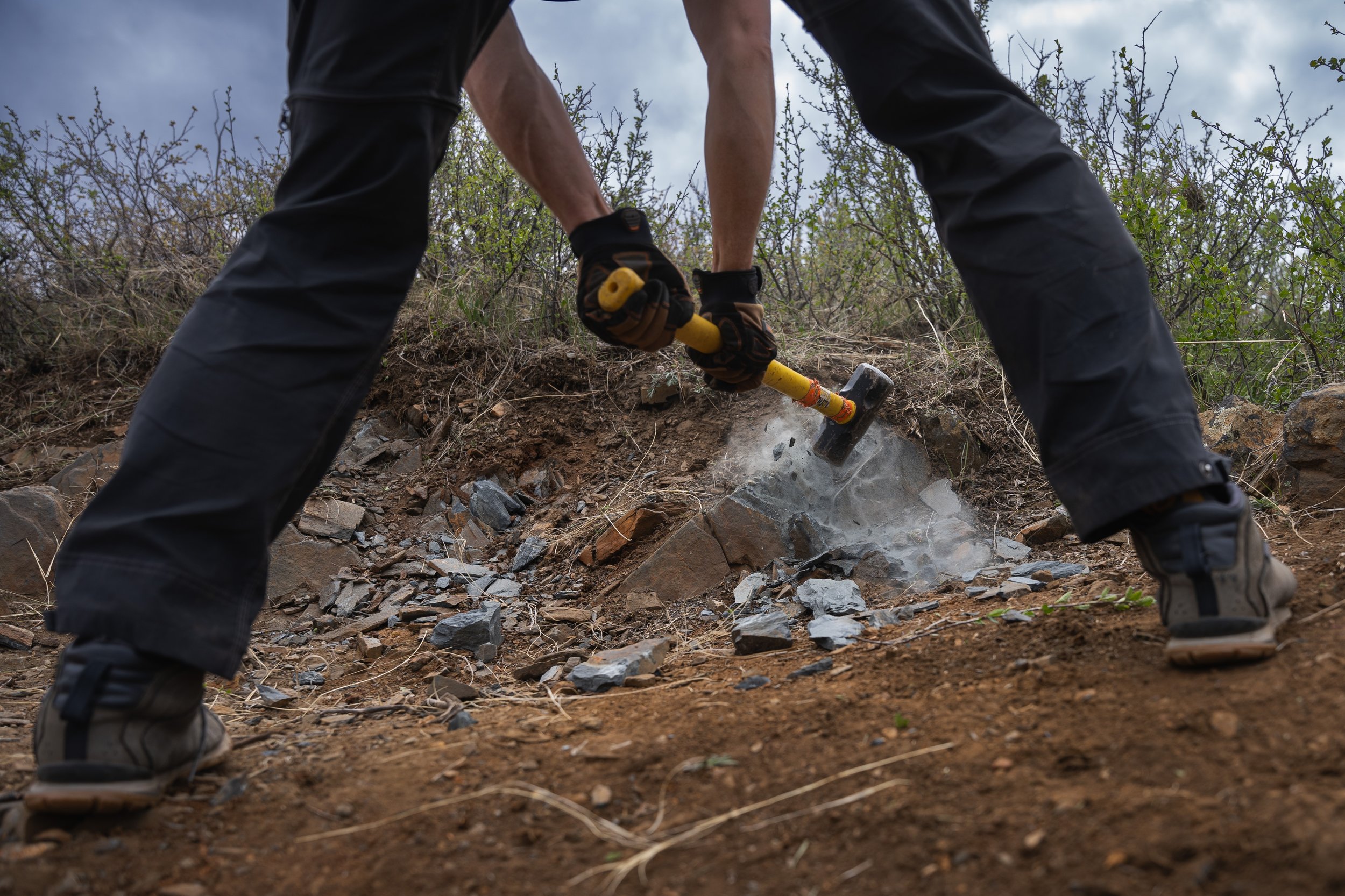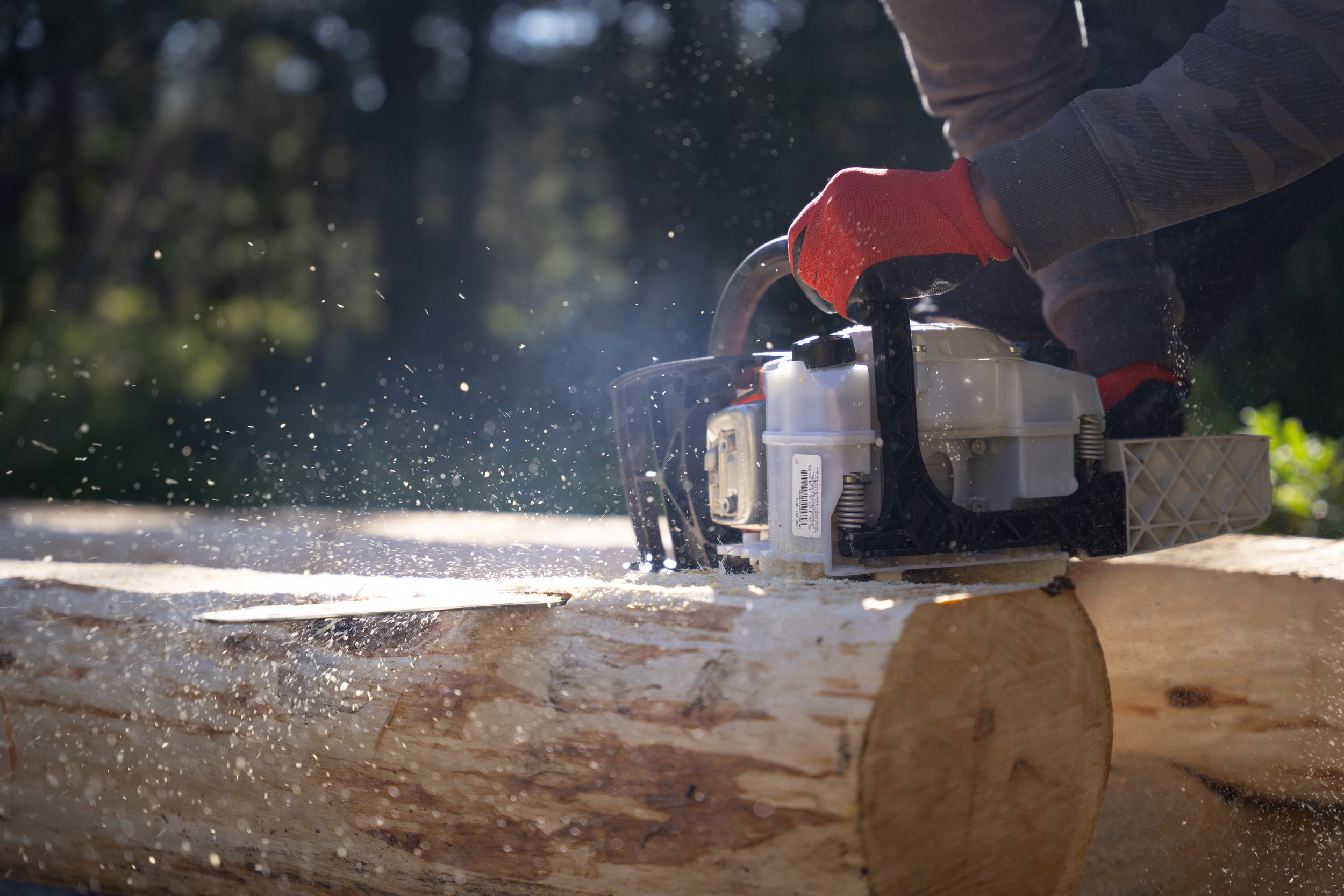
What does it take to build a trail?

Trail Lifecycle
Planning
Laying the groundwork with vision, data, and collaboration.
Trail planning initiates trail projects with comprehensive site analyses, considering environmental factors, user groups, and trail objectives to ensure alignment with land agency goals and practices. Engaging stakeholders and conducting feasibility studies are pivotal to identifying potential trail corridors, assessing impacts, and aligning with broader land management practices.
A new trail planning process is often triggered by events or trends such as natural disasters that damage existing infrastructure, growing demand and user diversity requiring network expansion, or the cumulative effect of long-term maintenance neglect that compromises trail safety and sustainability.
Design
Where Creativity meets conservation on the drawing board
Trail design is a meticulous process that balances user experience with environmental stewardship, focusing on sustainable tread, positive and negative control points, and minimizing ecological impact. Finalizing the trail alignment involves field flagging, GPS data collection, NEPA studies, and interactive assessments involving stakeholders to ensure the trail is intuitive, safe, and adheres to the design standards during planning.
Construction
Turning lines on maps into ribbons of rock and dirt through a landscape.
Though trail construction aims to follow a systematic process - clearing corridor, bench cutting, refining out-slope, back-slope, and finish work - each day on the hill brings new challenges that often require adapting on the fly with only the resources available. Building trail in the Rocky Mountains means the name lives up to the material; rock is abundant, stubborn, and often becomes both the obstacle and the solution. These real-time decisions turn lagged lines into functional trails, blending design intent with the creativity and problem-solving that put trail builders in a league of their own.

Use
Where the dirt meets the tires, or shoes, and the trail proves itself
Use is where all the planning, design, and construction are put to the test - by bikers, hikers, runners, equestrian, and the elements. Though often an overlooked phase, this is when feedback is gathered, patters are observed, and the trail begins to speak for itself, revealing what worked, what did not, and what is next.
Maintenance
Sustaining the experience through stewardship and care
Regular maintenance - like corridor clearing, tread repair, and drainage upkeep - is essential to preserving trail integrity, ensuring user safety, and extending the trail’s lifespan. This phase is also where re-routes, alternate lines, and new features take shape, allowing trails to evolve based on wear, community feedback, and user needs. Without consistent upkeep, land agencies may be forced to return to costly and time consuming planning and design phases to restore or rebuild damaged trails. This is why volunteer involvement is pivotal to a healthy trail system. Fostering stewardship, reducing long-term cost, and ensuring trails remain sustainable, enjoyable, and responsive to the communities that use them.
Trail Building 101: How Trails Are Built
Trail building is both an art and a science. Thoughtfully designed trails minimize environmental impact, enhance user experience, and ensure long-term sustainability. Whether you're a hiker, mountain biker, or nature enthusiast, understanding how trails are built can deepen your appreciation for the effort that goes into creating and maintaining them.
Our Trail Stewardship Crew and volunteers will be hard at work developing and maintaining the trails you love.
Planning & Design
Before the first shovel hits the ground, agencies and organizations go through an extensive planning process. This includes:
Assessing the Land: Evaluating terrain, soil composition, water flow, and potential environmental impacts.
User Considerations: Determining if the trail will be for hikers, bikers, equestrian, moto, or any multiple of multi-use.
Sustainable Design: Using techniques like contouring to minimize erosion and maximize longevity.
Clearing & Shaping the Trail
Once the design is finalized, work begins:
Brushing: Removing small trees, shrubs, and debris while preserving the natural landscape as much as possible.
Tread Construction: Shaping the actual trail surface to ensure proper drainage and stability.
Switchbacks & Grade Reversals: Techniques used to control erosion on steep terrain.
Our 2025 Trail Crew is focusing on this aspect of trail building at Hewlett Glutch, Roaring Creek, and other locations throughout the 2025 build season. Follow along here for weekly updates on the trail crew.
Drainage & Erosion Control
Water is the biggest threat to trail sustainability. Builders use:
Outsloping: Angling the trail to direct water off the surface.
Drain Dips & Grade Breaks: Strategic dips to slow and disperse water.
Armoring & Reinforcement: Using rocks and logs to stabilize vulnerable sections.
Final Touches & Maintenance
A well-built trail requires ongoing care:
Compacting & Finishing: Ensuring a smooth, stable surface.
Signage & Wayfinding: Placing markers and information for safe navigation.
Regular Maintenance: Repairing damage, maintaining drainage structures, and reinforcing weak points.
Get Involved!
Trail building relies heavily on volunteers and community support. Organizations like Overland Mountain Bike Association (OMBA) host trail dig days where you can help maintain and improve local trails. No experience needed—just a willingness to get your hands dirty and give back to the trails you love.
Interested in volunteering? Check out OMBA’s volunteer page and join a dig day near you!










